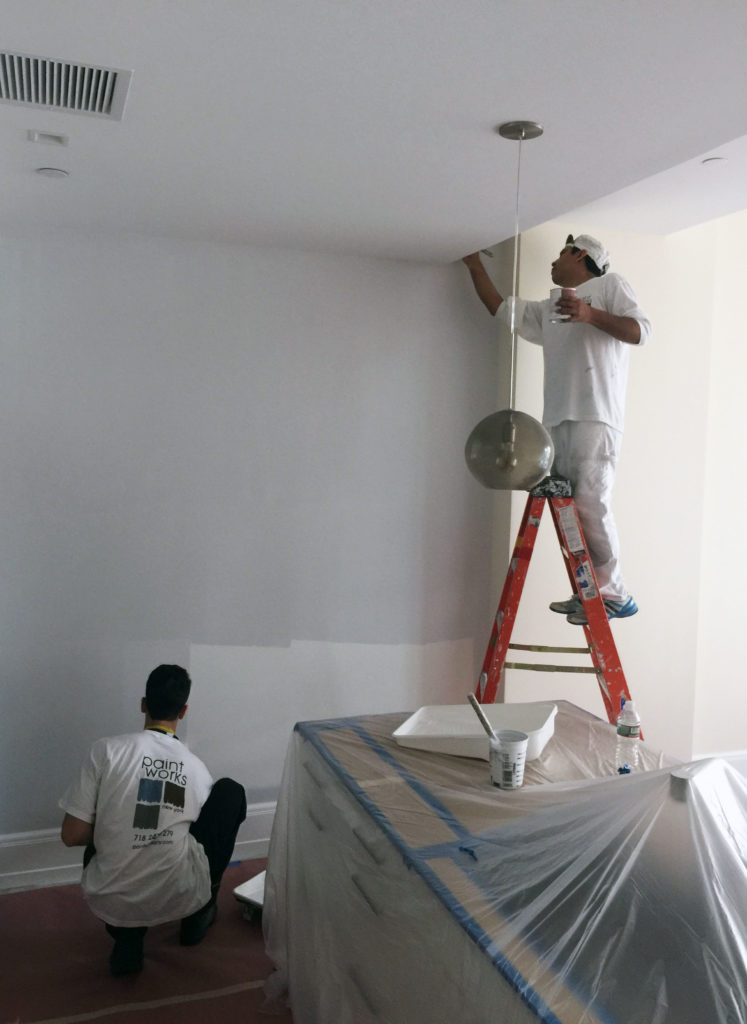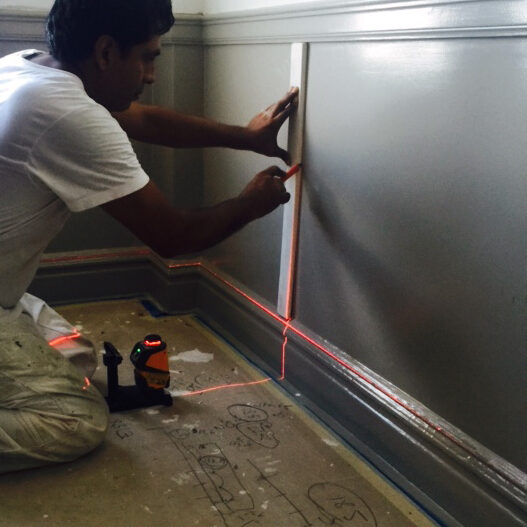
Acrylic paint: A type of water-based paint that is made up of pigments suspended in an acrylic polymer emulsion. This is less commonly used than Latex paint
Backrolling: Using a roller to smooth out brush marks and ensure even coverage after using a paint brush.
Basecoat: The first coat of paint applied to a surface.
Bleeding: When the color of a previously painted surface seeps through a new coat of paint. (This doesn’t happen when you hire Paint Works)
Caulk: A sealant used to fill gaps and cracks around trim, baseboards, and other areas where two surfaces meet.
Color blocking: Applying different colors to separate different areas of a room.
Color wash: A thin, translucent layer of paint applied over a basecoat which adds depth and interest to a color.
Color wheel: A tool that helps to visualize color relationships and choose color palettes.
Cut-in: Painting around the edges of a room or a feature, such as a window or door frame, with a paintbrush.
Dry brushing: A technique in which paint is lightly brushed onto a surface, leaving some of the underlying color visible.
(Drywall) Mud: A mix of gypsum and water used to smooth and finish drywall surfaces before painting. Mud can be applied in several different levels of finish.
Drop cloth: A protective fabric, plastic, or hardboard surface used to catch drips and spills and protect the space while painting.
Dustless Drywall Preparation: A drywall installation and finishing process that yields little to no dust in the environment.
Feather: Blending the edges of a paint stroke to create a smooth transition with surrounding areas.
Flashing: When the paint surface appears glossy and wet, even after it has dried.
Glaze: A transparent or semi-transparent coating applied over paint to add depth.
Lap marks: Visible bands of color that occur when paint is applied in overlapping strokes. (You won’t have lap marks when you work with Paint Works)
Latex paint: A water-based paint that is commonly used for interior painting.
Lintel: The horizontal beam above a door or window.
Muriatic acid: A strong acid used to clean and etch concrete surfaces before painting.
Opacity: The degree to which a paint covers a surface. More opaque (higher opacity) paints cover more completely.
Paint remover: A chemical solution used to remove paint from surfaces.
Paint thinner: A solvent used to thin oil-based paints and clean brushes and other tools.
Pointing: Filling small gaps in masonry such as a fireplace, with a cement-based compound.
Pot life: The length of time that a paint or coating can be used after it is mixed.
Primer: A paint that is applied before the topcoat to improve adhesion and hide imperfections.
Scuff sanding: Light sanding to roughen up the surface for better adhesion of paint.
Sheen: The level of glossiness of a paint finish, in ascending order of glossiness, can be flat, eggshell, satin, semi-gloss and gloss.
Spackling: A paste used to fill small holes and cracks before painting.
Stipple: A technique in which paint is applied in small dots or dabs to create a textured effect.
Taping: Using masking tape to protect areas of a room from paint.
Tinting: Adding additional color to paint.
Topcoat: The final coat of paint applied to a surface.
Trim: The decorative molding and edging around windows, doors, and baseboards.
Varnish: A clear or colored film coating applied over paint to protect the surface and enhance the finish.
Wood filler: A putty used to fill gaps, cracks, and holes in wood surfaces before painting.
Wainscoting: Decorative paneling applied to the lower section of a wall.
Water popping: A technique in which water is applied to a wood surface before staining or painting to improve absorbtion of the finish

